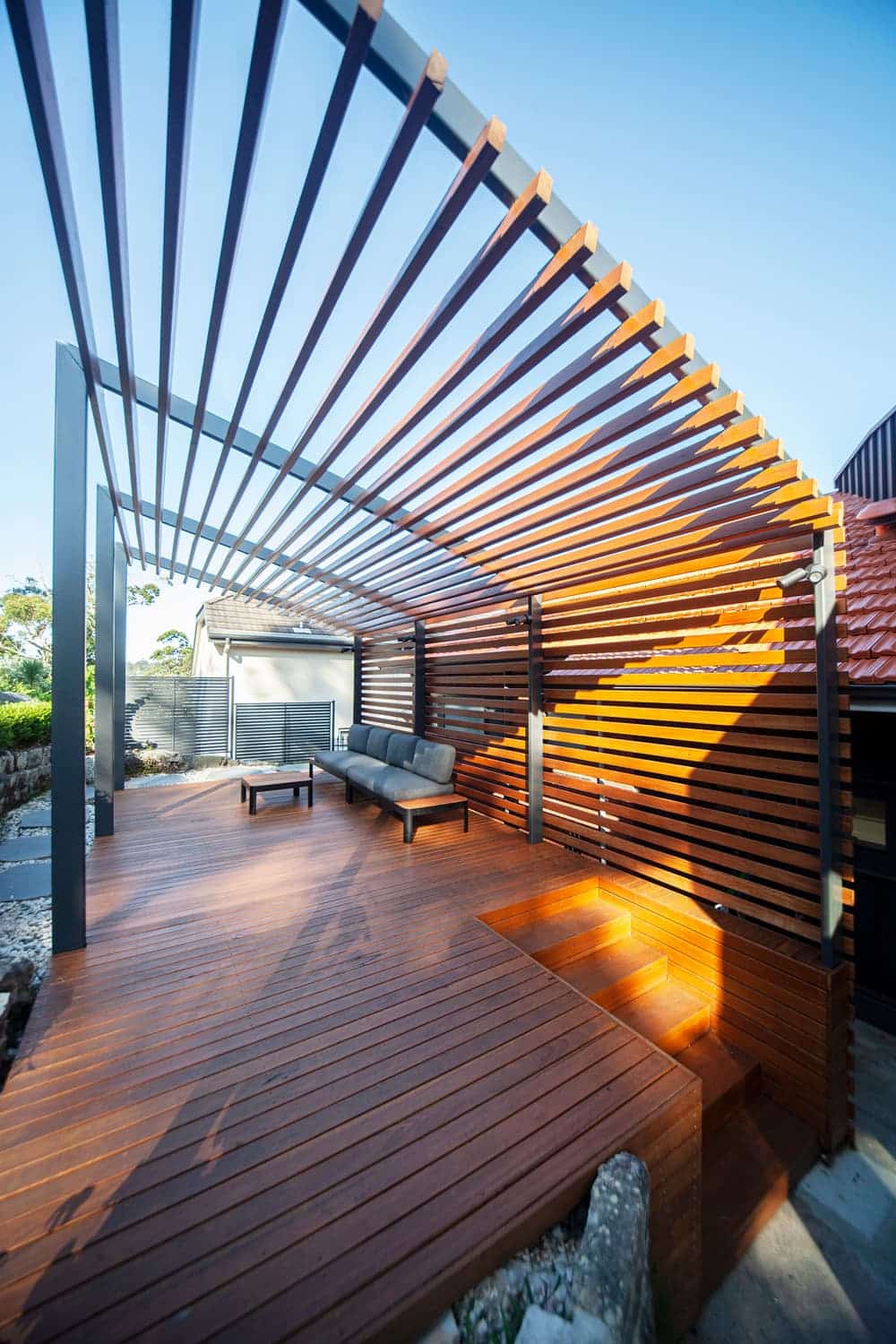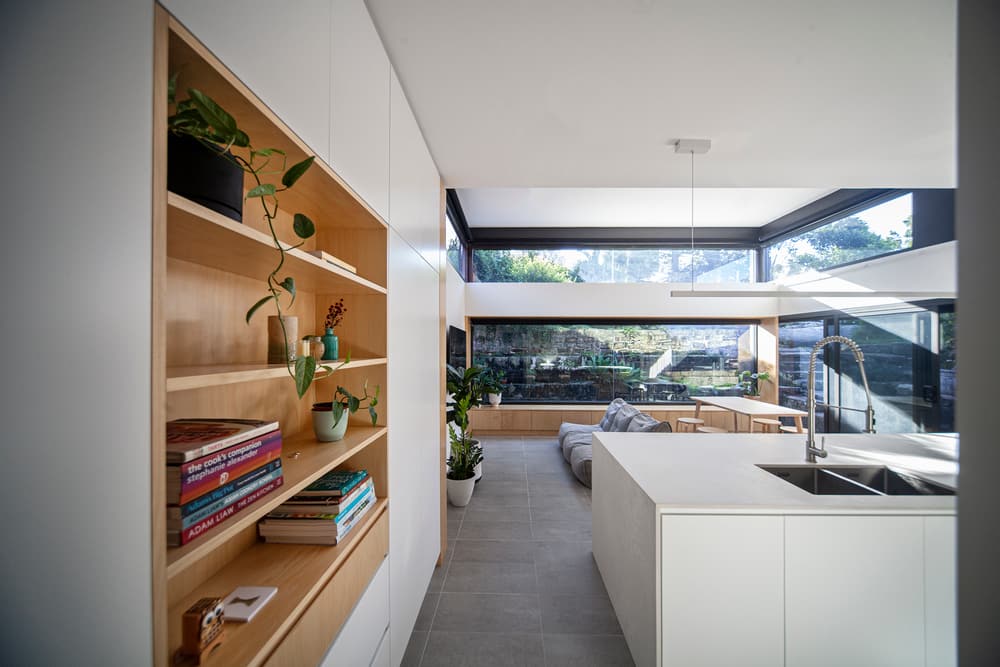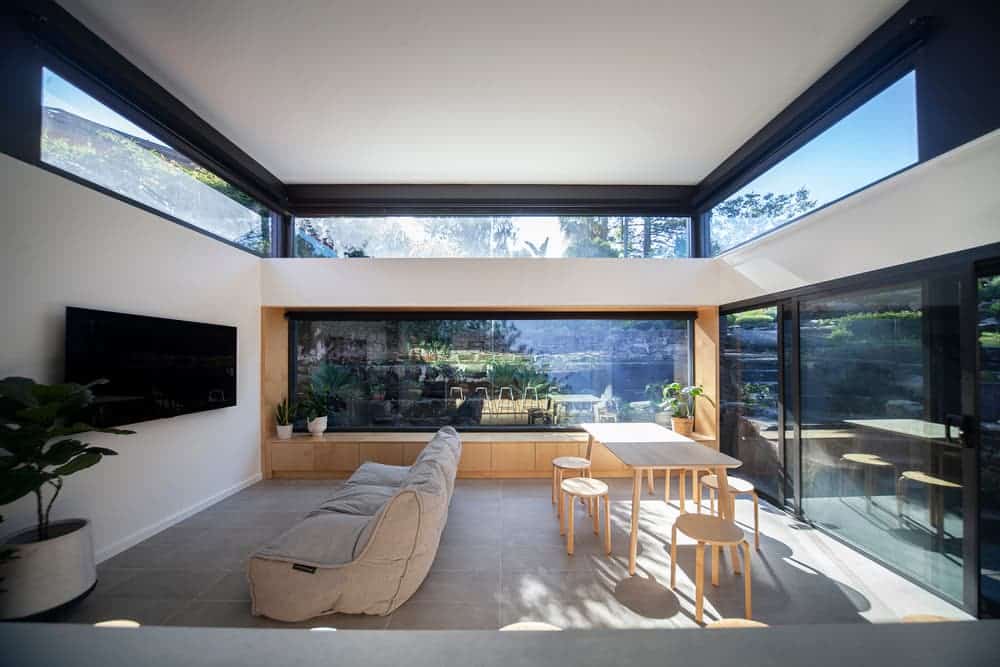Project Name: Castle Cove Alterations
Office Name: Chung Architects
Lead Architects: Andrew Chung
Completion Year: 2021
Gross Built Area (m2/ ft2): 20sqm extension, total renovation 35sqm
Project location: Sydney, Australia
Program: New combined living kitchen and dining area, Outdoor room
Photo Credits: Andrew Chung
Castle Cove alterations is a rear extension project of a family home in northern Sydney. The project involved the renovation of a 1970’s home to render it more suitable to the needs of family. The existing home did not relate to the sites slope, or orientate to take advantage of passive solar design.
The family has diverse interests and needs for the home including work from home facilities, home arts and crafts studio and operating a community food cooperative for over 50 local families. The project added a combined living kitchen and dining area, outdoor room, additional bedroom and reorganised laundry.
The extension has become the new heart of the home. The family now spend the majority of their time in this combined living area, and the additional functionality was all achieved in a modest 20 sqm extension.
The site is characterised by naturalistic landscape terraces and an existing home on the slope. The challenge was extending the home while maintaining private open space and meaningful connection between indoor and outdoor spaces.
This small addition and outdoor room act as dual built forms that open up the rear of the home towards the landscape. The project includes new kitchen and living areas, with a sloping curved ceiling and highlight windows to maximise daylight and outlook, and positioned to optimise privacy.
The kitchen includes island bench with dual front storage, walk in secondary bench and coffee making facilities and display and pantry storage. The project tripled the homes storage capacity with the integrated joinery in the kitchen and living areas and the recycling of the existing kitchen as garage / workshop storage. In the modest space available, rather than extend just as a kitchen and dining space, the project includes a hybrid dining living space for more casual living and play.
The timber lined continuous bay window links the living and dining areas. It forms a seating zone that minimises clutter and additional furniture, and includes integrated storage. The frameless glazed bay window visually connects the interiors spaces to the natural stone landscape terraces.
The outdoor room incorporates steel portals, hardwood blackbutt decking and screen battens. Its form orientates upwards towards the landscape and allows an intermediate platform to access the terraced garden. This open and flexible space allows the family to enjoy gatherings, children’s play and respite whilst attending to various gardening activities. It is profiled to provide summer shade and opens out enjoy sunny winter afternoons.
The outdoor room pergola provides Summer shading for the living room extension. Other sustainable design features include: Solar panels plus battery storage, wide roof overhangs and operable glazing with low-E coatings. Site building waste was minimised with material incorporated into the landscape terraces and the existing kitchen cabinetry repurposed for the community food cooperative in the garage.

























